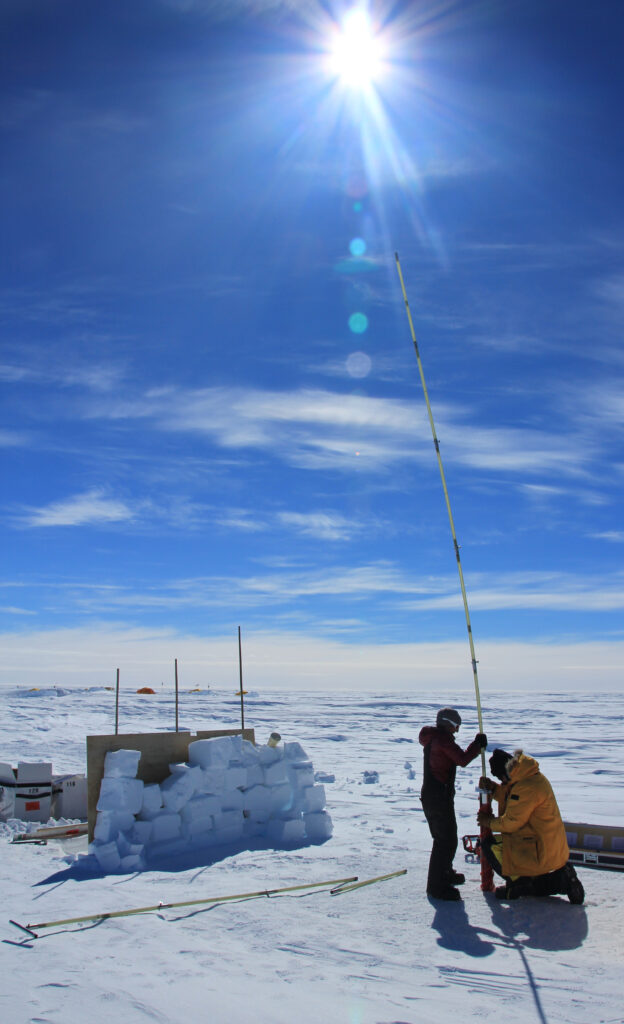The centrepiece of global climate policy —the Paris Agreement’s 1.5°C goal for global temperature rise—may be too lenient to avoid disaster.
Even if the world meets this target, hundreds of millions of people living in low-lying areas could still lose their homes to rising seas by the end of the century.
That’s the stark warning from scientists today, who say polar ice sheets are already destabilizing at today’s warming levels and that the real ‘safety’ threshold may lie closer to just 1°C, the rise in global temperatures last seen in 1990.
Fast-forward three decades: ice loss has quadrupled, seas are rising faster, and we may need to return to that earlier climate state—or risk irreversible flooding of many regions, according to a Durham University led study published in the journal Communications Earth and Environment, co-authored by researchers from universities in Bristol, and Wisconsin-Madison and Massachusetts Amherst, both USA.
Evidence from ancient warm periods suggests that several metres of sea level rise – or more – can be expected when global mean temperature reaches 1.5 °C. Moreover, since that target was set in 2015 in Paris, studies show that the ice sheets are losing mass, even under 1.2°C warming.

When it comes to the ice sheets in Antarctica and Greenland, which store enough ice between them to raise global sea levels by almost 65 metres, the mass of ice lost has risen fourfold since the 1990s so they are currently losing around 370 billion tonnes of ice per year.
Global temperatures temporarily exceeded the 1.5 °C limit last year and, although it would have to average that figure for 20 years to be considered as breaching Paris, if this warming continues it would likely generate several metres of sea level rise over the coming centuries.
Lead author Professor Chris Stokes, in the Department of Geography, Durham University, said: “There is a growing body of evidence that 1.5 °C is too high for the ice sheets in Greenland and Antarctica.”
Co-author Jonathan Bamber, Professor of Glaciology and Earth Observation at the University of Bristol, added: “Recent satellite-based observations of ice sheet mass loss have been a huge wake-up call.”
Currently, around 230 million people live within one metre of sea level –a plausible sea level rise by 2100 at current rates – and melting ice represents an existential threat to those communities, including several low-lying nations. “Sea level rise is likely to accelerate to rates that are very difficult to adapt to – rates of one centimetre per year are not out of the question within the lifetime of our young people,” said Prof Stokes.
The researchers add that further work is urgently needed to more precisely determine how to avoid rapid sea level rise from melting ice sheets. “If a policymaker were to ask: “What do we need to do to stop or slow sea level rise from ice sheets?” then the logical answer is that we need to go back to 1°C or lower,” said Prof Stokes. “Further work is required to determine exactly where a ‘safe’ limit lies for ice sheets.”
“The clear message from our paper is that every fraction of a degree matters so that 1.6 is better than 1.7, which is better than 1.8,” he added. “Put simply, the higher the temperature and the longer it is sustained, the higher sea levels will rise. Hence, the sooner we slow and stop the warming, the easier it will be to return to safe levels.”
“Perhaps it is a reason for hope, we only have to go back to the early 1990s to find a time when the ice sheets looked far healthier,” he continued. “Carbon dioxide concentrations were 350 parts per million, which others have suggested is a much safer limit for planet Earth. Carbon dioxide concentrations are currently around 424 parts per million and continue to increase.”
Fellow co-author, Professor Rob DeConto, from the University of Massachusetts Amherst, USA, added: “It is important to stress that these accelerating changes in the ice sheets and their contributions to sea level should be considered permanent on multi-generational timescales.
“Even if the Earth returns to its preindustrial temperature, it will still take hundreds to perhaps thousands of years for the ice sheets to recover. That’s why it is so critical to limit warming in the first place.”
Belize, which long ago moved its capital inland, is at high risk of sea level rise due to its low-lying terrain, extensive coastline, and numerous small islands.
Commenting on the research, Ambassador Carlos Fuller, climate negotiator for Belize, said: “Findings such as these only sharpen the need to remain within the 1.5°C Paris Agreement limit, or as close as possible, so we can return to lower temperatures and protect our coastal cities.”
Sea level rise results from both melting ice sheets and thermal expansion of the oceans, though the former is now dominant, currently adding around 1.6 mm of sea level rise per year, while expansion adds around 1.4mm.

